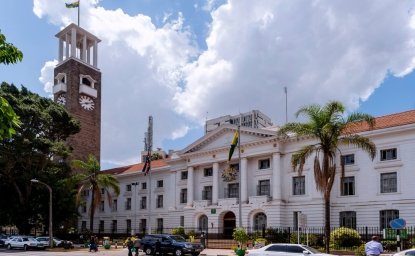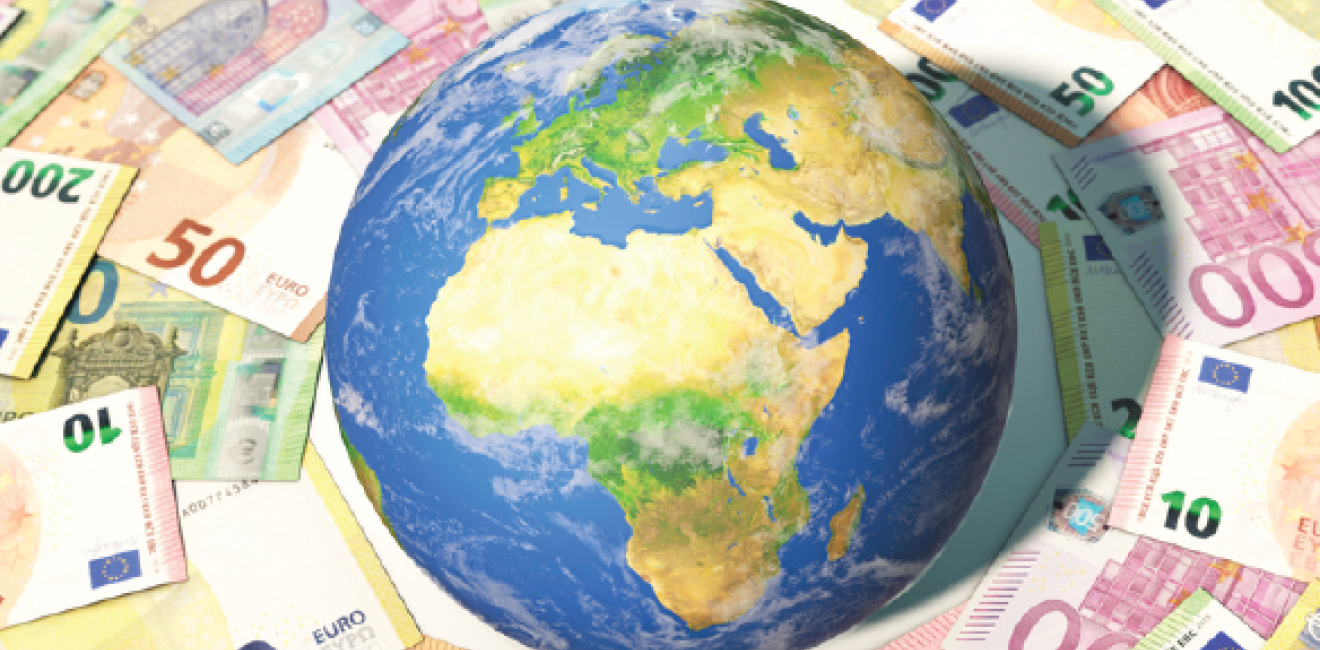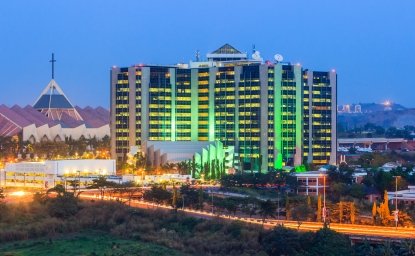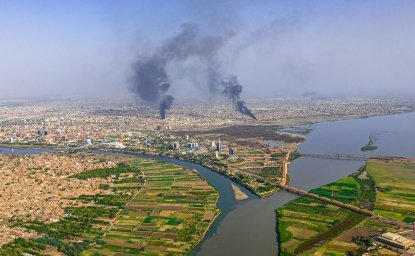
A blog of the Africa Program
Are power dynamics in international aid changing? In 2020, the racial justice movement called out the entrenchment of racism in national and international systems, including in foreign aid. Activists and aid workers alike called on the aid industry to stop perpetuating a global system that places wealthy donor countries in positions of power and poorer developing countries as passive recipients.
But when COVID-19 wreaked havoc across the globe, the responses exposed the continued entrenchment of global inequities. Vaccines were readily available to some but a distant hope for others. Instead of distributing COVID-19 vaccines based solely on need, countries used "vaccine diplomacy" to win allies. More recently, the aid industry's rapid response to the war in Ukraine — driven in part by diverting aid resources from crises in Africa — has also reinforced the perception that aid benefits the privileged few.
To better understand the evolving power dynamics in aid between 2020 and 2022, we convened a series of discussions that sought to put African voices at the forefront. We held informal conversations with thought-leaders from across the African continent. We then brought them together in online consultations to see how their perspectives converged and diverged. Finally, we brought donor voices into the discussion through a high-level roundtable in Geneva, Switzerland.
In each of these discussions, we focused on the dynamics of aid on the African continent, asking: Have calls for more equitable aid led to changes in how aid is designed and distributed across Africa? Has there been a shift in the locus of power in international aid? If so, where and how has this shift taken place? Given the current trajectory, how will aid power dynamics likely evolve in the coming years? We summarize the key findings below.
One, all actors in the aid industry have sources of power. Shifts in aid dynamics threaten to undermine the power of each of these actors, diminishing incentives for real change.
In an increasingly multipolar world, aid power dynamics are no longer as simple as donor-recipient government relations. Our participants made clear that aid is shaped by a wide range of increasingly diverse actors, including international donors, recipient governments, international and national NGOs, civil society organizations (CSOs), citizens in the recipient country (and in the donor country), as well as private sector companies operating in the international development space. Although power is not shared equally, each of these actors has its own source of power and dependencies. They each also have something to lose.
Donors have the power of the purse. Recipient governments have the power of consent, given their sovereign right to determine who operates on their territory and how. Both are accountable to their political constituencies. Donors also depend on international NGOs or commercial international development companies to win aid bids and distribute goods and services to government agencies, domestic partners, or other domestic actors. Civil society and social movements often want to challenge the authority of governments (and sometimes donors). But they are often financially dependent on donors and/or governments and, just like donors, require consent from national governments to continue to operate.
In this interdependent system, shifts in the relative power of one actor will reverberate throughout the system. Moreover, patterns of aid dependency make changing aid power dynamics difficult. Aid-dependent economies rely on aid to sustain their macro-economic policies and expenditures. When aid is withdrawn, governments must find alternative sources of income or face social and political unrest. Sometimes they may have to institute significant austerity measures, which may exacerbate popular protests.
Participants argued that donors and recipients should have an exit strategy for an aid partnership. As one participant argued, "Aid is meant to be a temporary bandage or a crutch, not a permanent prosthetic." However, exit strategies are challenging when so many actors remain dependent on the current system.
Two, the growing threat of populism and democratic backsliding underscores the critical need to strengthen local civil society organizations (CSOs).
Several participants highlighted the importance of supporting civil society actors to protect civic space in a context of increasing democratic backsliding. Many CSOs remain aid-dependent, especially when they operate in contexts where civic space is restricted, resources are limited, or they otherwise lack broad constituent support. When these CSOs also advocate for greater government accountability and transparency, they often face political targeting and reductions in their potential funding. Donors can play a critical role in protecting this civic space by providing CSOs with aid that helps insulate them from domestic political pressures and supports their civic programming. However, their reliance on external aid continues to reinforce aid power dynamics where CSOs are more accountable to foreign donors than their local constituents.
Three, true localization of aid is challenged by subcontracting, capacity building, and elite NGOs.
Participants agreed that aid should be "owned" by domestic actors (i.e., "local ownership") but that attempts at localization often lead to subcontracting. Localization and subcontracting are not the same. In common practice, donors issue a call for proposals, which national NGOs or foreign international development firms respond. The winner is then contracted with implementing the donor's planned project or program. Instead, participants agreed that national NGOs and other "local" partners should be closely involved from the project's inception through its design, implementation, and evaluation. They should be treated as true partners — not just as subcontractors or bystanders — so that aid can benefit from their knowledge, skills, and expertise.
Participants also noted that aid is frequently given to NGOs or firms run by the country's elites, excluding smaller NGOs or community organizations that are genuinely connected to communities. These elite domestic development actors may be skilled in speaking donor lingo, understanding donor lingo, and producing satisfactory financial reports, but they can lack legitimacy with local communities and have a harder time bringing about sustainable change on the ground. Instead, our participants emphasized that aid should be delivered to those who understand the problem and can provide domestically owned and sustained solutions.
Shifting power dynamics in foreign aid are complex, continuous, multifaceted, and multilayered. They require careful consideration, ongoing reflection, and rigorous policy analysis and attention. The solutions are complex, but the need is clear. It is also clear from our consultations that until the power dynamics are more balanced between domestic and international actors in the global aid architecture, the ability of international aid to deliver inclusive, equitable, and sustainable development in Africa will remain constrained.
The authors are grateful for support received by Humanity United, the Knowledge Platform on Security & Rule of Law, the Raymond Frankel Foundation, the US Institute of Peace, and the University of Geneva. The views and opinions expressed in this post are those of the authors and do not necessarily reflect the views or positions of the funders, the Wilson Center or those of Carnegie Corporation of New York. The Wilson Center's Africa Program provides a safe space for various perspectives to be shared and discussed on critical issues of importance to both Africa and the United States.
Photo Credit: 3D Illustration, money for the world by DesignRage/Shutterstock.com
Authors
Associate Professor, School of International Service, American University

Africa Program
The Africa Program works to address the most critical issues facing Africa and US-Africa relations, build mutually beneficial US-Africa relations, and enhance knowledge and understanding about Africa in the United States. The Program achieves its mission through in-depth research and analyses, public discussion, working groups, and briefings that bring together policymakers, practitioners, and subject matter experts to analyze and offer practical options for tackling key challenges in Africa and in US-Africa relations. Read more

Explore More in Africa Up Close
Browse Africa Up Close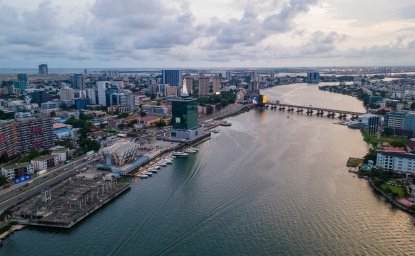
The Innovative Landscape of African Sovereign Wealth Funds
